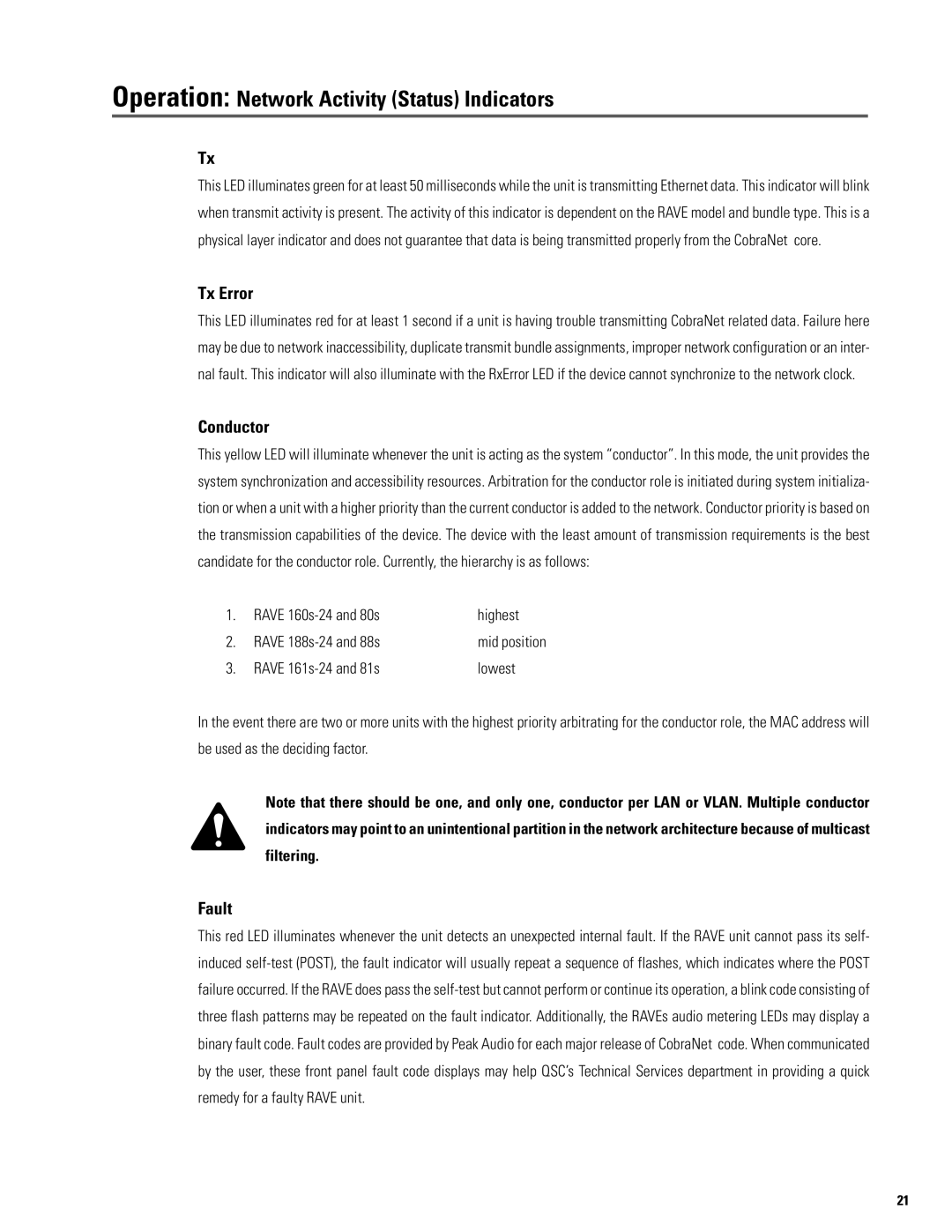
Operation: Network Activity (Status) Indicators
Tx
This LED illuminates green for at least 50 milliseconds while the unit is transmitting Ethernet data. This indicator will blink when transmit activity is present. The activity of this indicator is dependent on the RAVE model and bundle type. This is a physical layer indicator and does not guarantee that data is being transmitted properly from the CobraNet core.
Tx Error
This LED illuminates red for at least 1 second if a unit is having trouble transmitting CobraNet related data. Failure here may be due to network inaccessibility, duplicate transmit bundle assignments, improper network configuration or an inter- nal fault. This indicator will also illuminate with the RxError LED if the device cannot synchronize to the network clock.
Conductor
This yellow LED will illuminate whenever the unit is acting as the system “conductor”. In this mode, the unit provides the system synchronization and accessibility resources. Arbitration for the conductor role is initiated during system initializa- tion or when a unit with a higher priority than the current conductor is added to the network. Conductor priority is based on the transmission capabilities of the device. The device with the least amount of transmission requirements is the best candidate for the conductor role. Currently, the hierarchy is as follows:
1. | RAVE | highest |
2. | RAVE | mid position |
3. | RAVE | lowest |
In the event there are two or more units with the highest priority arbitrating for the conductor role, the MAC address will be used as the deciding factor.
Note that there should be one, and only one, conductor per LAN or VLAN. Multiple conductor indicators may point to an unintentional partition in the network architecture because of multicast filtering.
Fault
This red LED illuminates whenever the unit detects an unexpected internal fault. If the RAVE unit cannot pass its self- induced
21
